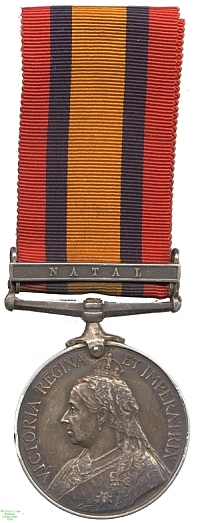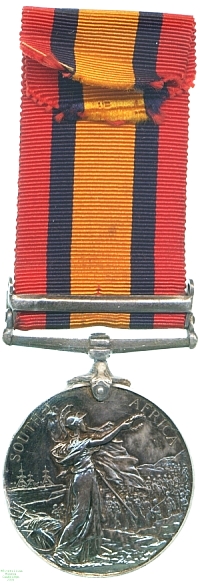
Obverse, a bust of Queen Victoria with veil

Reverse, Britannia in the foreground facing right holding a standard and waving a wreath over an army marching along the shore, with ships offshore in the background

Obverse, a bust of Queen Victoria with veil |

Reverse, Britannia in the foreground facing right holding a standard and waving a wreath over an army marching along the shore, with ships offshore in the background |
During the 1830s and 1840s several Dutch republics had been established outside the British Cape Colony in South Africa, among which were Transvaal and the Orange Free State, all now in modern South Africa. Transvaal was annexed briefly by the British but its independence re-established in the First Boer War.
In the 1880s however the discovery of vast gold reserves in Transvaal brought large numbers of foreign settlers, largely British, across the border, and an attempted coup at the instigation of Cecil Rhodes in 1895. Military escalation followed, negotiations failed and the two Boer republics, convinced that the British intended annexation, declared war on the Cape Colony in October 1899.
Boer troops immediately invaded the British provinces of Natal and the Cape Colony. Natal, at this time less urbanised than the Cape, did not give rise to such famous sieges as those further west but nonetheless between October 1899 and the expulsion of organised Boer forces in May 1900 there was much dogged fighting there, for which reason the forces engaged in the province between those dates were made eligible for this bar to the Queen's South Africa Medal in 1901.
This medal was awarded to Petty Officer J. Quill, who served aboard the 2nd-class cruiser HMS Thetis off the coast of Natal during the fighting. The earliest issues of the medal indicate that the War was not expected to last as long as it did, as they bear the dates 1899-1900 in the reverse field. Very few were issued in this state, but a large number of the first issues show signs of the dates' erasure, often as in this case insufficiently thorough. Lester Watson purchased the medal at some point before 1928.